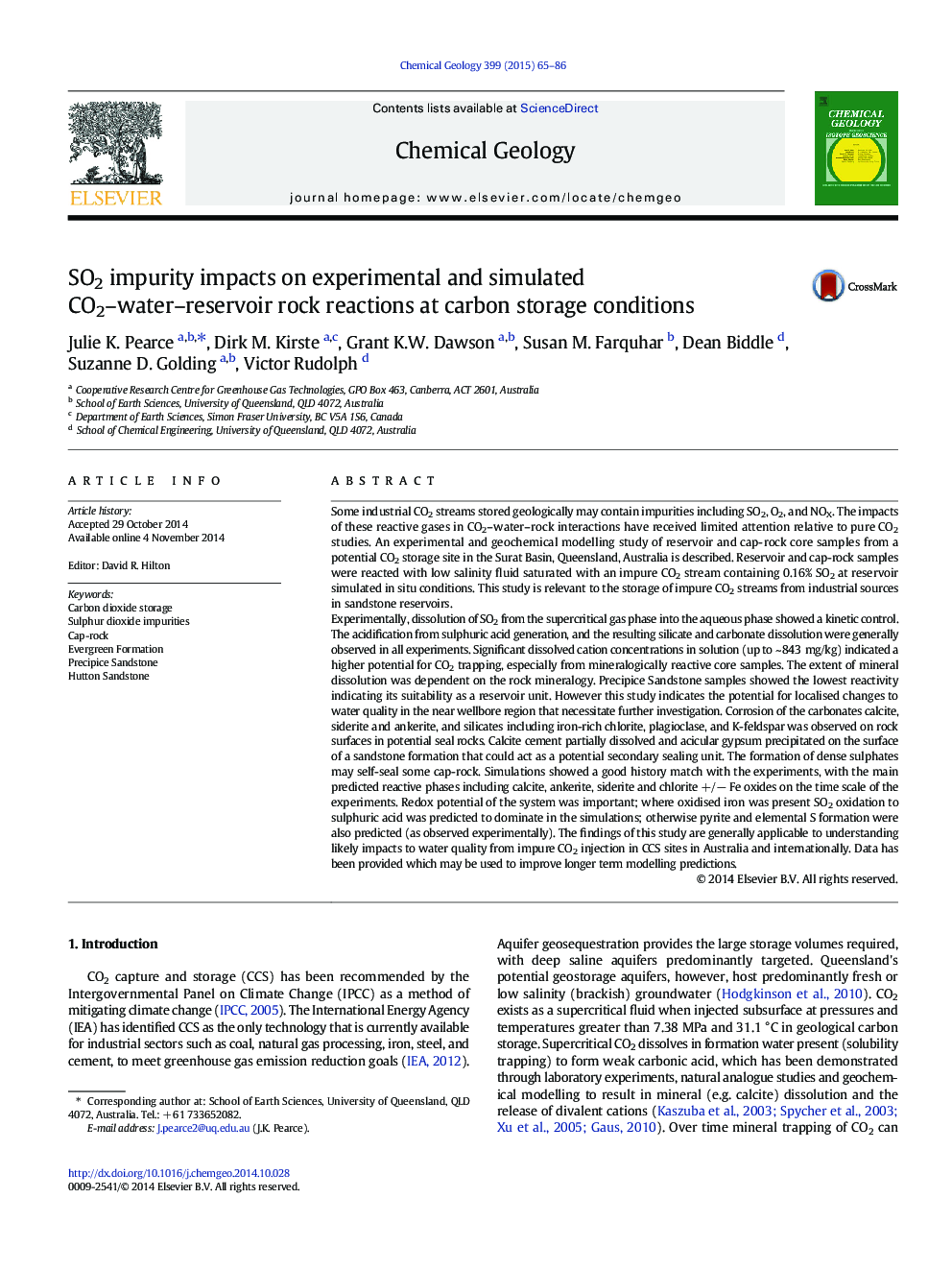| Article ID | Journal | Published Year | Pages | File Type |
|---|---|---|---|---|
| 4698598 | Chemical Geology | 2015 | 22 Pages |
•SO2–CO2–water–rock experiments on potential CO2 sequestration site core•Geochemical modelling in agreement with experiments•Sulphate, redox and pH influenced by the presence of carbonates and iron oxides•Reactive silicate dissolution in carbonate poor rock•Sulphate formation in carbonate rich rock
Some industrial CO2 streams stored geologically may contain impurities including SO2, O2, and NOX. The impacts of these reactive gases in CO2–water–rock interactions have received limited attention relative to pure CO2 studies. An experimental and geochemical modelling study of reservoir and cap-rock core samples from a potential CO2 storage site in the Surat Basin, Queensland, Australia is described. Reservoir and cap-rock samples were reacted with low salinity fluid saturated with an impure CO2 stream containing 0.16% SO2 at reservoir simulated in situ conditions. This study is relevant to the storage of impure CO2 streams from industrial sources in sandstone reservoirs.Experimentally, dissolution of SO2 from the supercritical gas phase into the aqueous phase showed a kinetic control. The acidification from sulphuric acid generation, and the resulting silicate and carbonate dissolution were generally observed in all experiments. Significant dissolved cation concentrations in solution (up to ~ 843 mg/kg) indicated a higher potential for CO2 trapping, especially from mineralogically reactive core samples. The extent of mineral dissolution was dependent on the rock mineralogy. Precipice Sandstone samples showed the lowest reactivity indicating its suitability as a reservoir unit. However this study indicates the potential for localised changes to water quality in the near wellbore region that necessitate further investigation. Corrosion of the carbonates calcite, siderite and ankerite, and silicates including iron-rich chlorite, plagioclase, and K-feldspar was observed on rock surfaces in potential seal rocks. Calcite cement partially dissolved and acicular gypsum precipitated on the surface of a sandstone formation that could act as a potential secondary sealing unit. The formation of dense sulphates may self-seal some cap-rock. Simulations showed a good history match with the experiments, with the main predicted reactive phases including calcite, ankerite, siderite and chlorite +/− Fe oxides on the time scale of the experiments. Redox potential of the system was important; where oxidised iron was present SO2 oxidation to sulphuric acid was predicted to dominate in the simulations; otherwise pyrite and elemental S formation were also predicted (as observed experimentally). The findings of this study are generally applicable to understanding likely impacts to water quality from impure CO2 injection in CCS sites in Australia and internationally. Data has been provided which may be used to improve longer term modelling predictions.
Graphical abstractFigure optionsDownload full-size imageDownload as PowerPoint slide
